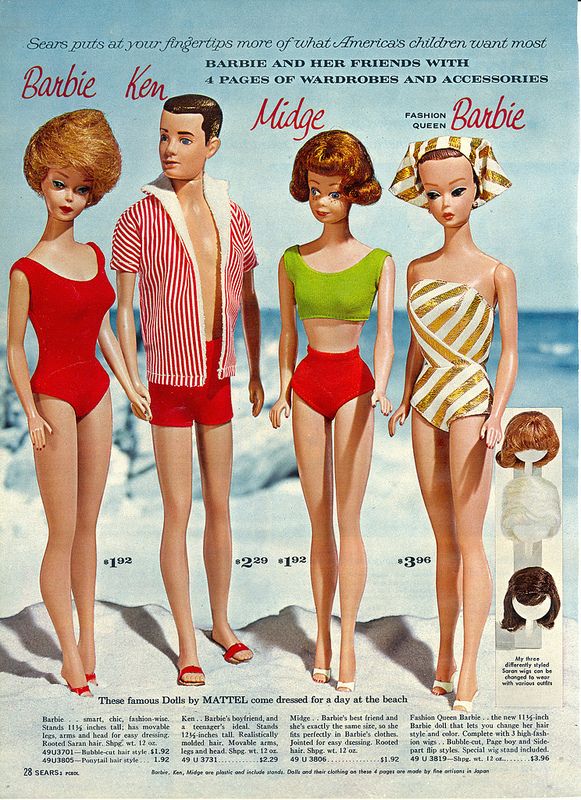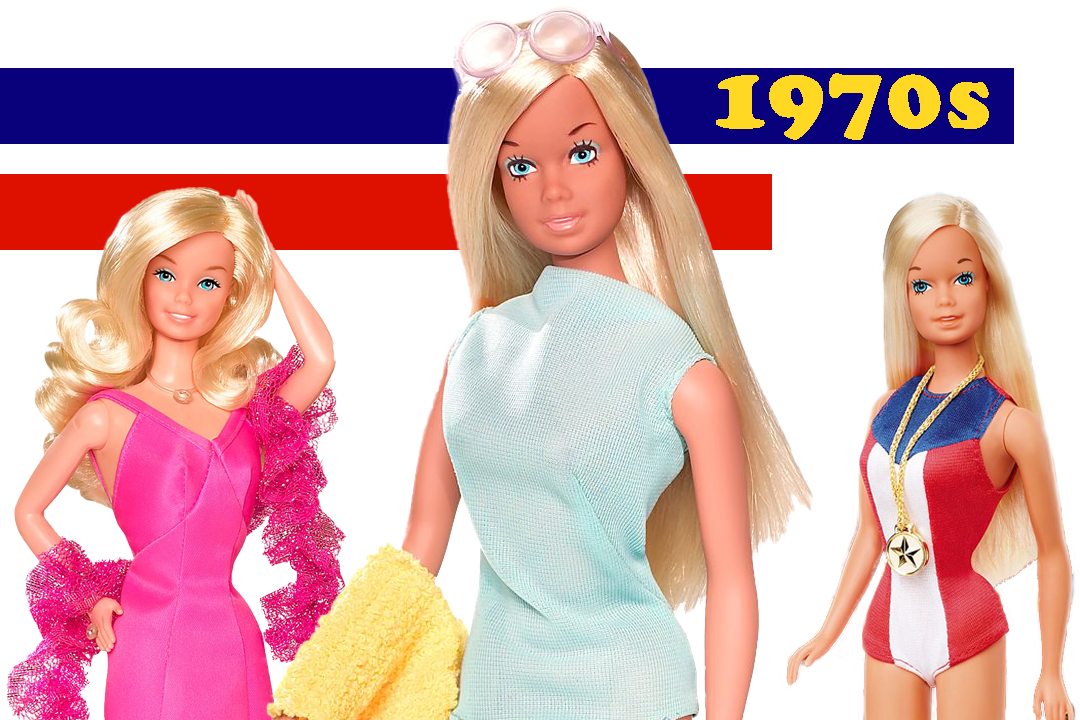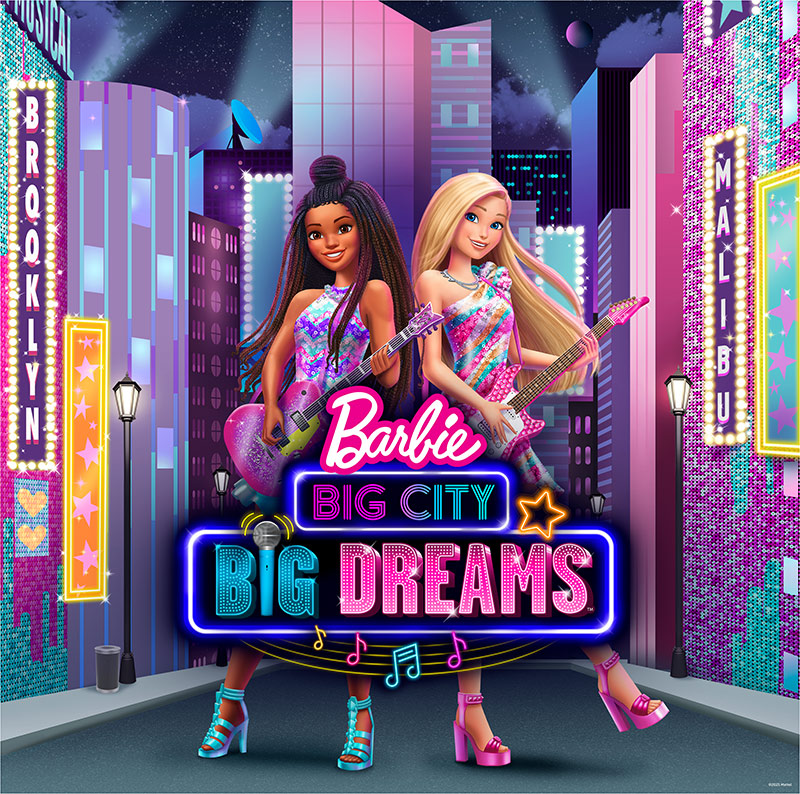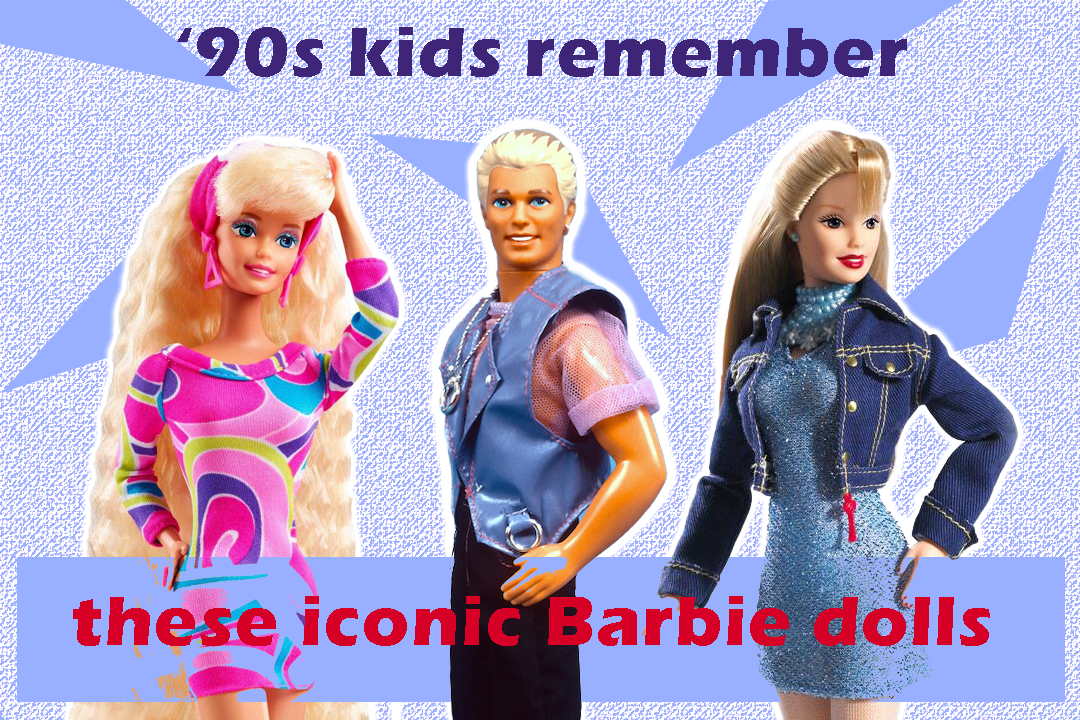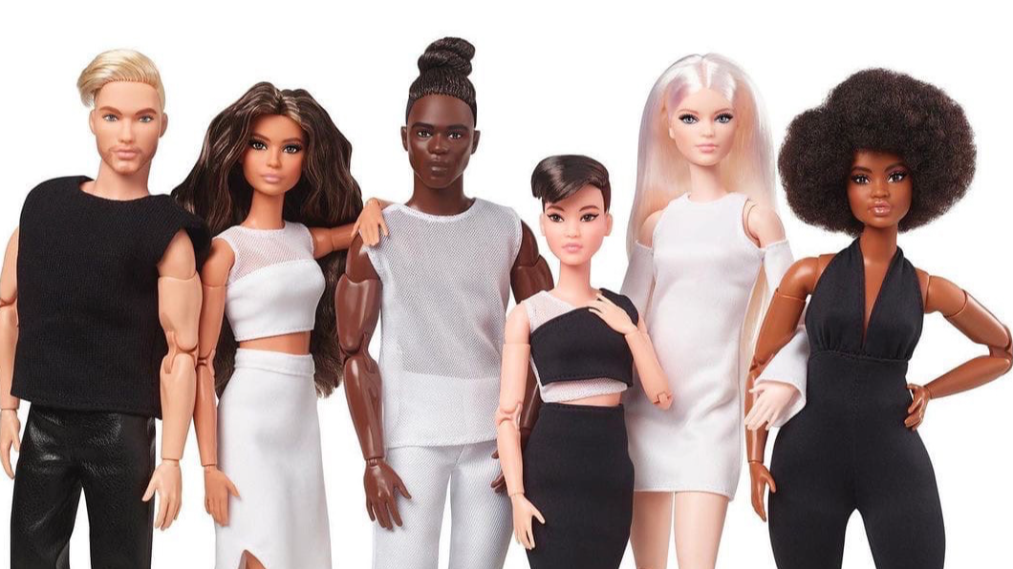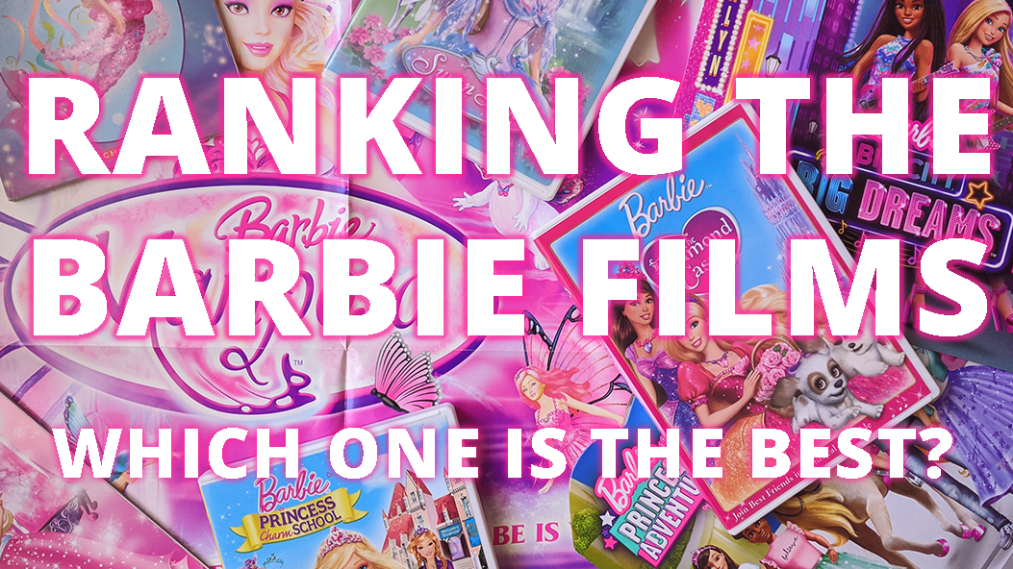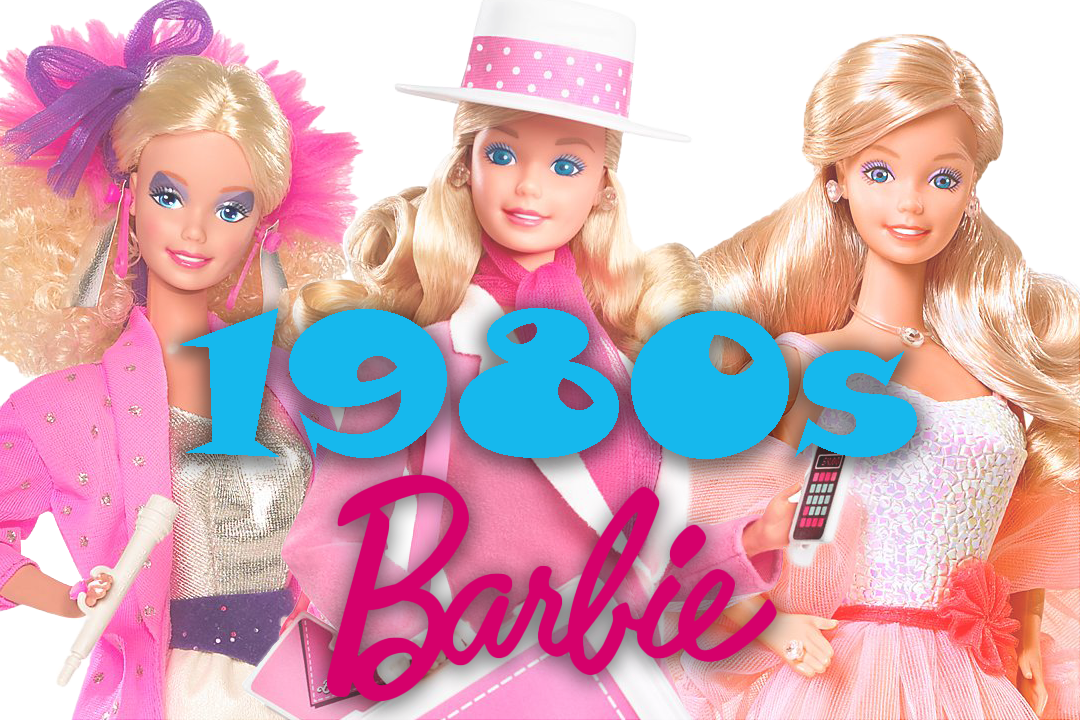Barbie Looks vs. Barbie Basics -- How do they compare?
by Rana Schenke | 19 Jul 2021
Product and Book Reviews
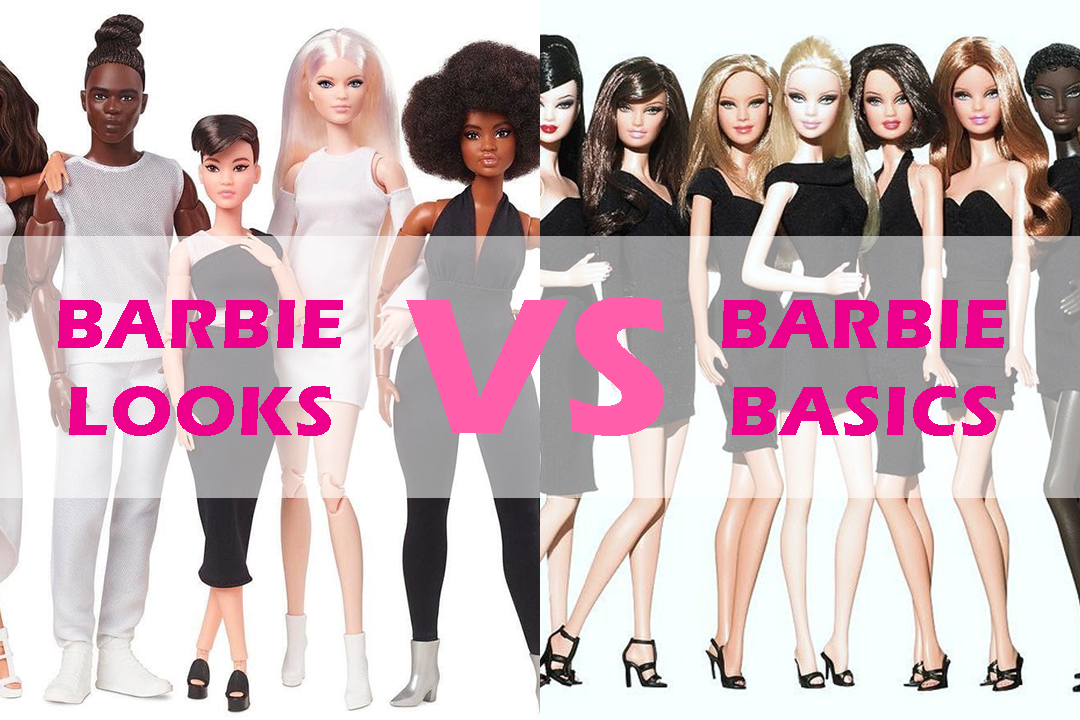
Introduced in 2009, the Barbie Basics Collection took the collecting world by a storm. Suddenly, there was an abundance of beautiful, diverse dolls with a variety of face sculpts, skin tones and hairstyles that encouraged collectors to play with styling and customization. For years, collecting meant acquiring pristine boxed dolls and keeping them that way. These dolls weren’t intended to sit in a box on a shelf and look pretty — they were meant to be played with! The line was very popular with collectors who were looking for other ways to enjoy their hobby.
Fast forward over ten years to 2021, where the collecting landscape has changed yet again. Social media has led many collectors to purchase dolls to debox, customize, redress and play with in a new way — by creating scenes, looks and poses to photograph to share. Today’s collector prizes articulation over almost all else, even buying dolls only to use as body donors for less-articulated dolls with more unique faces. This can get expensive quickly, though, which is why the Barbie Looks line has come at the perfect time. The line marries extreme articulation with unique faces and styling at a very appealing price point. The line is similar in intention, styling and execution to the Basics line, but there are a lot of differences as well.
So, how do the new Barbie Looks dolls compare to the much-loved Barbie Basics Collection?
- Bodies
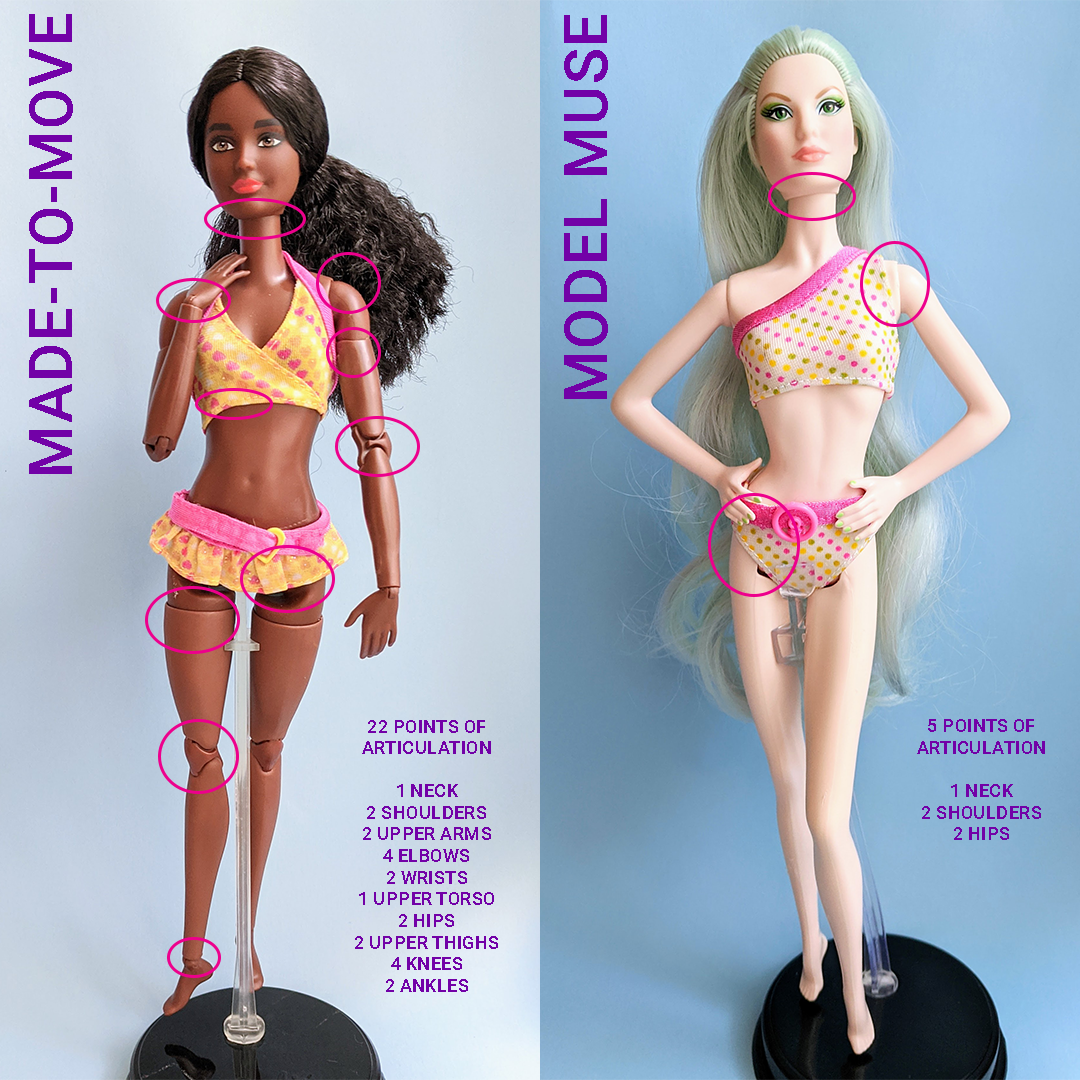
Image: Barbie doll with Made-to-Move body and Barbie doll with Model Muse body. These dolls are not Looks or Basics dolls and are only used for comparison.
Barbie Basics dolls used the Model Muse body, seen on the right, which typically has five points of articulation. The Model Muse body was first introduced in 2004 with the Model of the Moment line. It’s statuesque, with the arms and legs molded to mimic fashion model poses. Model Muse Barbie dolls have significantly larger and more “sculpted” feet than most Barbie dolls, so they are unable to swap shoes with dolls who use the regular body. Some later waves of the line used an articulated Model Muse body. The Basics Ken dolls use a male version of the body first created for the Twilight Edward doll.
Barbie Looks dolls use the Made-to-Move body, left, introduced in 2016, which has 22 points of articulation. The Made-to-Move body comes in multiple sizes to reflect the range of sizes currently offered in the Barbie line. Four Barbie dolls are included in the first wave of the Looks line, each with a different body type — curvy, tall, petite, or original. The two Ken dolls use the male Made-to-Move body first introduced in the BMR1959 line.
2. Faces

In the Barbie Basics Collection, dolls were designated by a “model number” that reflected which head mold was used. No new head molds were used for this line; instead, existing molds were used with different combinations of hair, eye, and skin tones.
The Barbie Looks dolls each use unique face molds created for the new line. Mattel has named these sculpts: the platinum blonde uses the “Victoria” sculpt, the curvy African American doll uses the “Elle” sculpt, the brunette doll uses the “Lina” sculpt, and the petite doll uses the “Kit” sculpt. The two Ken dolls use the “Jon” sculpt (African American doll) and the “Sean” sculpt (blonde).
3. Designer

Both doll lines were designed by Mattel designer Bill Greening.
The Barbie Basics line was designed for adult collectors. According to Greening, the line was for adult collectors who enjoying “playing” with their dolls by opening them, redressing them and restyling them. Greening said the dolls in the line were made with saran hair specifically so doll owners could do boil perms and restyle easily. The variety of face sculpts were intended to provide plenty of options for customizers who like to repaint and reroot dolls.
The Barbie Looks line has been promoted as an evolution of the Basics line. Mattel marketing materials have encouraged collectors to stage their own photo shoots with the dolls and tag them with #barbiestyle on social media.
4. Diversity
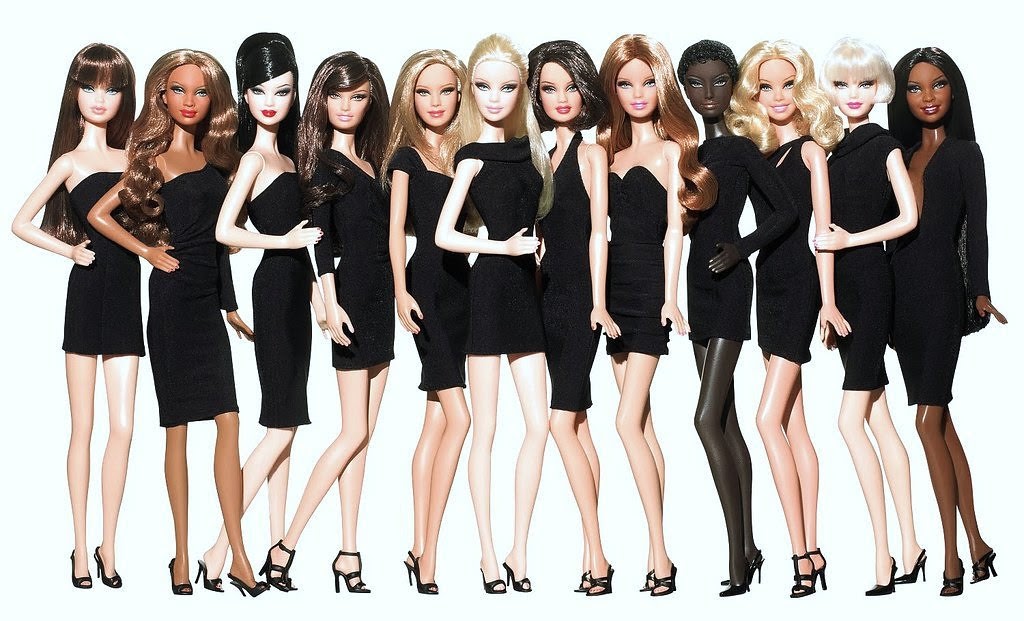
In the first wave of 12 Basics dolls, the line featured three African American dolls of varying skin tones, one Asian doll, four blonde dolls with light skin tones, one redhead doll, and three brunettes with light skin tones. One of the brunette dolls uses the Teresa face sculpt, which is traditionally used for Hispanic dolls. If the doll with the Teresa face sculpt is considered Hispanic, 5 out of the 12 dolls, or 42%, are not white, while 7 out of 12 (4 blondes, 2 brunettes, 1 redhead), or 58%, are white. The ratios differ when all of the waves are considered: overall, 67% of the Barbie Basics dolls (female and male) released were white or coded white, while 32% coded as another ethnicity, with African American dolls making up 21% of the overall line. About 33% of the line was made up of blonde dolls. Blonde dolls also showed the greatest diversity in face sculpts in the line, with the hair color appearing atop 10 different face sculpts.
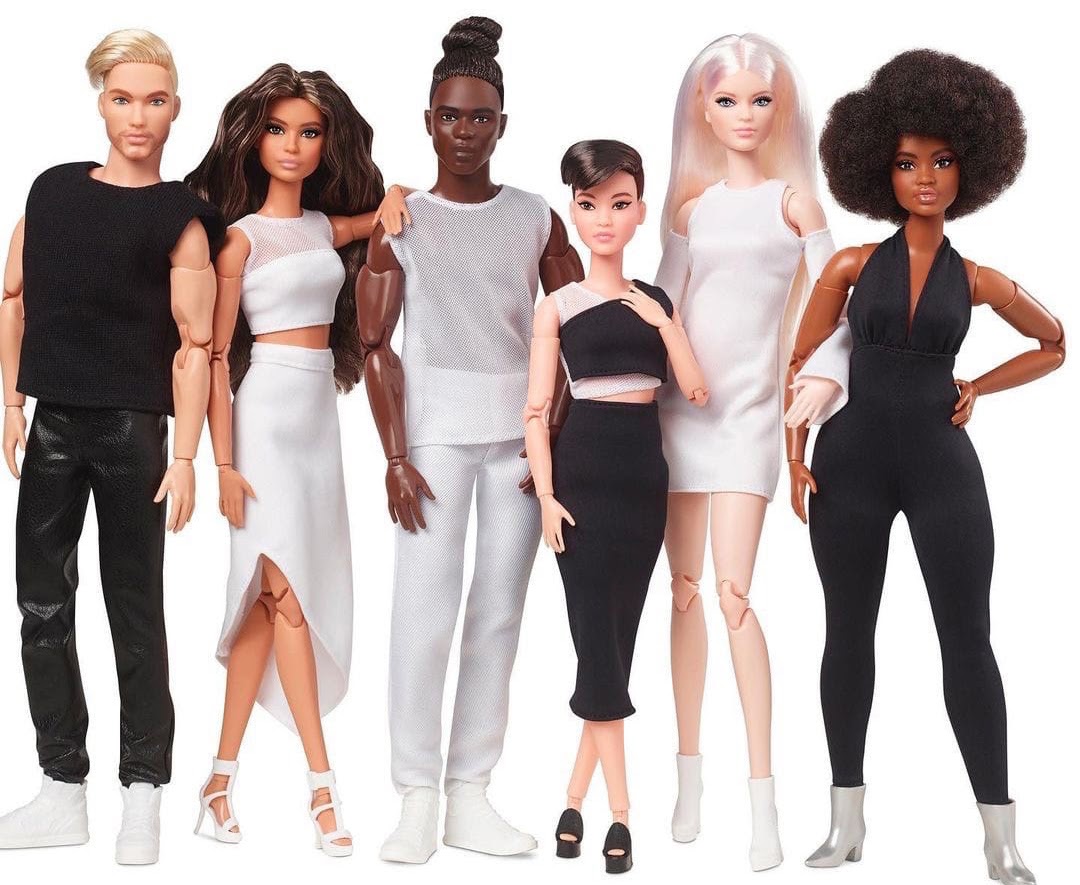
In the Barbie Looks line, two of the six dolls are African American, one doll is Asian, two dolls are white with blonde hair, and one is brunette with a medium skin tone. Breaking this down mathematically, ⅓ of the dolls are African American, ⅓ are white, ⅙, or one doll, is Asian, and ⅙, or one doll, codes as Hispanic. Overall, ⅓ of the dolls are white and ⅔ are of other ethnicities.
5. Clothes/Accessories
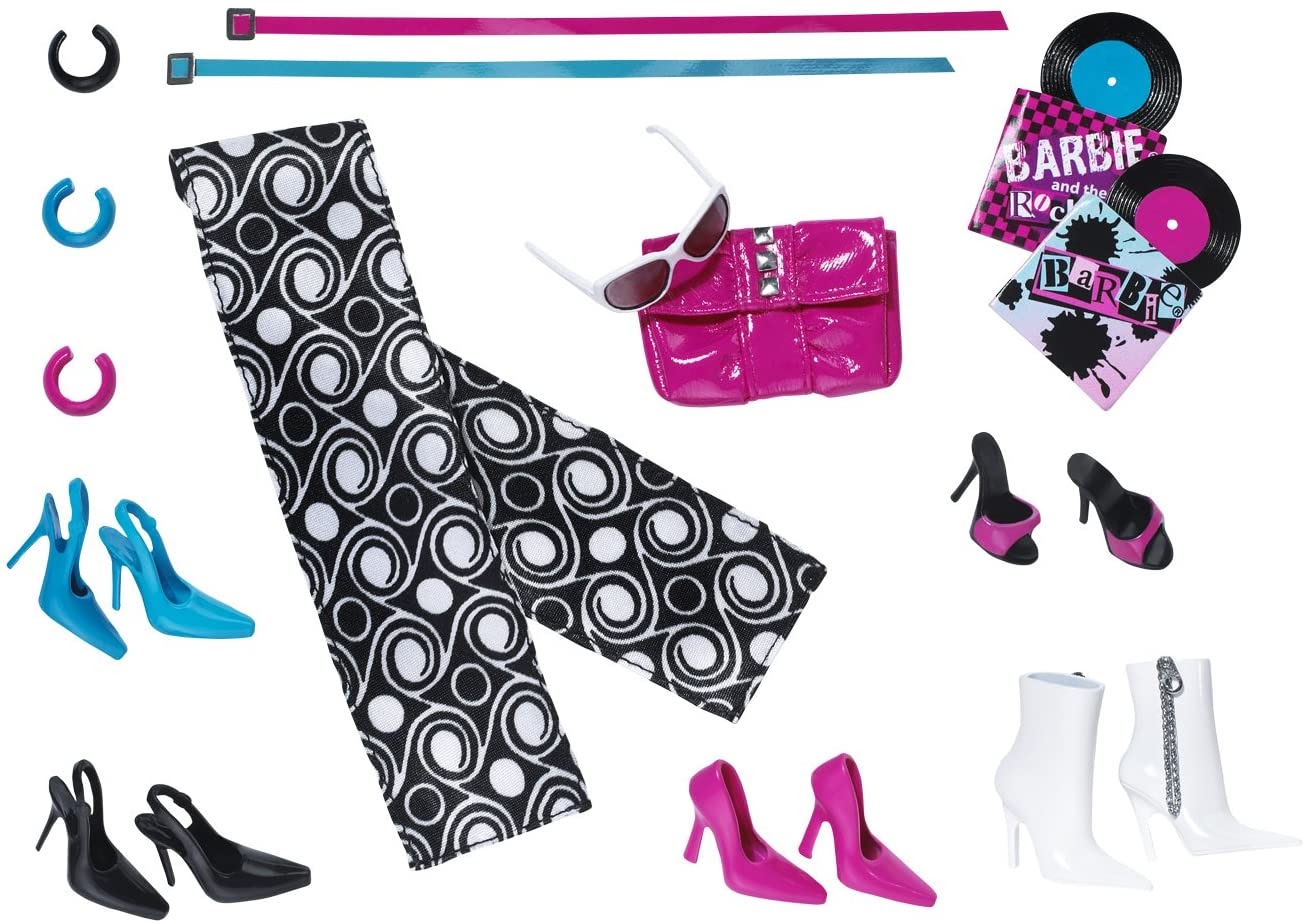
The first collection of Barbie Basics dolls featured the dolls in classic Little Black Dresses, while later waves would feature them in other ensembles to fit a theme, such as denim or swimwear. Over the span of the line, 16 fashion and accessory packs were released to accompany the Barbie Basics dolls. Four packs were released with the first collection.
The Barbie Looks dolls are similarly unified in style, although instead of sticking strictly to black, they follow a black-and-white color palette. They also show a greater differentiation in outfit styles, with one doll wearing a dress, one in a jumpsuit, and two in skirt/top combos. The male dolls each wear a sleeveless top and long pants. As of now, no fashion or accessory packs have been released to accompany the dolls, and it’s unknown whether any will be released.
Overall, the Basics and Looks lines are both products of their time and offer interesting insight into the changing mindsets in the collecting community. It will be exciting to see where the Barbie Looks line goes from here. Will we see some high-quality fashion and accessory packs? Will more dolls with an even greater diversity in ethnicity, face sculpt and body type be released? It’s an exciting time to be a part of the Barbie community, and this new line has a lot of potential to become a staple in the Barbie Signature lineup.
Related Product
Related Blogs
Recent Blogs

General
McHALE DESIGN CASE STUDY: MONSTERVERSE- THE LEGEND CONTINUES…

General
Build-A-Bear Celebrates National Teddy Bear Day with Donation to The Toy Foundation™

Industry Commentary, Op-Ed
Toy Foundation Auction is Now Open for Your Bids

Industry Commentary, Op-Ed
Bracelets, Stickers, and Viral Fame: The Story Behind Sky Castle Toys’ Sticki Rolls

Biographies and Interviews
Chrissy Fagerholt: Luck is when Preparation Meets Opportunity!
See more
Recent Wiki

BOOK REVIEWS
Book Review: Storm: Dawn of a Goddess by Tiffany D. Jackson

BOOK REVIEWS
Book Review: Erno Rubik and his Magic Cube by Kerry Aradhya

BOOK REVIEWS
Game Review: Trip Chaser

COMPANIES
Learning Express Toys Hosts 25th Annual Convention & Toy Expo at JW Marriott Tucson

MISCELLANEOUS
Submit Your LA Showroom Details for 2025 Toy Previews
See more
POP's Got Talent

POP Entertainment
Randy Klimpert Shares his Ukulele Collection

POP Entertainment
Steve Casino Peanut Art

POP Entertainment
Everyone's Talking about POP!

POP Entertainment
Princess Etch - a Multi-Talented Etch A Sketch Artist

POP Entertainment
Joseph Herscher of Joseph' s Machines.
See more
Recent POPcast

Hidden Role: The Brains Behind your Favorite Games
Connie Vogelmann designed Apiary & Wyrmspan!

Hidden Role: The Brains Behind your Favorite Games
Bob Fuhrer... Is THE Crocodile Dentist!

Hidden Role: The Brains Behind your Favorite Games
Tom Dusenberry... Bought Atari, Wizards of the Coast, and Avalon Hill!

Hidden Role: The Brains Behind your Favorite Games
Matt Leacock created Pandemic... the game!

Hidden Role: The Brains Behind your Favorite Games
Scott Brown and Tim Swindle... are Launching a New Sport!
See more
POPDuos

POPDuos: Interviews with Legends and Leaders
POPDuo: Richard Dickson, Mattel’s President & COO, and Kedar Narayan, Young Inventor Challenge AMB

POPDuos: Interviews with Legends and Leaders
POPDuo: Will Shortz and Josh Wardle

POPDuos: Legends and Leaders Explore Creativity
POP Duo: Elan Lee, Co-Founder, Exploding Kittens.and Jeff Probst, Host and Exec Producer, Survivor

POPDuos: Legends and Leaders Explore Creativity
POP Duo: David Fuhrer, MNG Director, Blue Sq Innovations & Shawn Green, past Dodgers & Mets MLB Star

POPDuos: Legends and Leaders Explore Creativity
POP Duo: Bob Fuhrer, Founder, Nextoy and Tom Fazio, Golf Course Designer
See more






